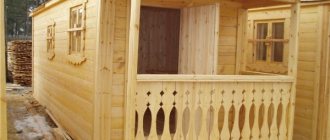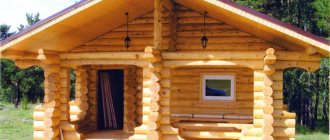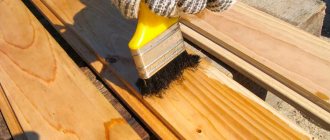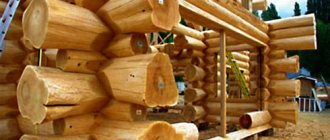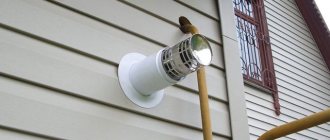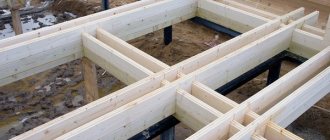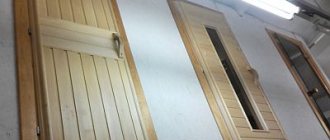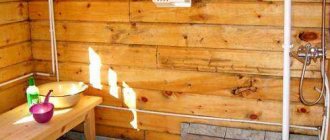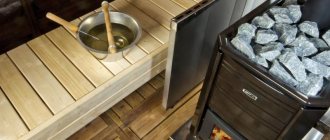If you want to find out which is better: frame baths or timber baths, read this article!
Frame construction technology, which has long been used in many European countries, originally appeared in Finland and Canada. Its use in Russia began relatively recently: the first use was in the construction of temporary block houses for shift workers. In terms of strength and reliability, new technologies put frame buildings on the same level as brick and concrete ones.
The construction of houses from profiled timber - an environmentally friendly material, durable, with good thermal insulation - is a technology that has long been used and proven in our country. Thanks to this, almost all the pitfalls encountered during the construction of timber buildings are known.
What effect does a bath have on the human body?
The healing effect of the bath on the body has been noticed for a long time. In those days, healers and healers prescribed steaming for patients of varying degrees of complexity (from mild colds to cardiovascular ailments). Temperature conditions and compliance with certain recommendations of experienced specialists allow you to achieve results in a short time.
Effect on the body:
- The cardiovascular system. Staying in a sauna increases your heart rate by 70% (100 - 160 beats per minute). They increase significantly when steaming with a broom and decrease when doused with cold water. All this causes a restructuring of the circulatory system, especially for those who visited it for the first time. Subsequent visits have a training effect.
- Respiratory system. Healing steam stimulates the functioning of the respiratory system. The resulting effect can be compared to inhalations in a hospital. To achieve maximum results, steam is saturated with various types of herbs. Hot air cures a runny nose, reduces swelling of the mucous membrane and nasal discharge. In the bathhouse, the immune system is strengthened, and positive dynamics are observed in those suffering from chronic respiratory diseases. Regular visits will relieve hoarseness, cough and even reduce noise in the lungs.
- Nervous system. Reduced blood flow in the brain leads to a decrease in emotional activity, as well as a drop in muscle and mental tension. The bathhouse has a beneficial effect on the emotional state. After visiting her, a person leaves with anxiety and headaches. Violation of the bath regime leads to headaches, dizziness, sleep disturbances and feelings of anxiety. Despite the fact that the bathhouse is a great stress for the body, most people tolerate visits without problems.
- Musculoskeletal system. Heat has a beneficial effect on muscles and joints. Visiting the bathhouse is preferable for patients with rheumatism, gout and arthrosis. You should only take a steam bath after consulting with an experienced doctor.
- Leather. Increased sweating is accompanied by the movement of substances from the tissue into the blood. This is accompanied by a decrease in swelling. Heat has a beneficial effect on the regeneration of epidermal cells and improves metabolic and immune functions. Bath procedures remove dead particles and skin secretions from the face, and also regulate the functions of the sebaceous glands. Steam removes sweat, grease and dirt. In the steam room, the first small wrinkles are smoothed out, and the skin acquires a healthy and beautiful shade.
Why is thermal insulation needed?
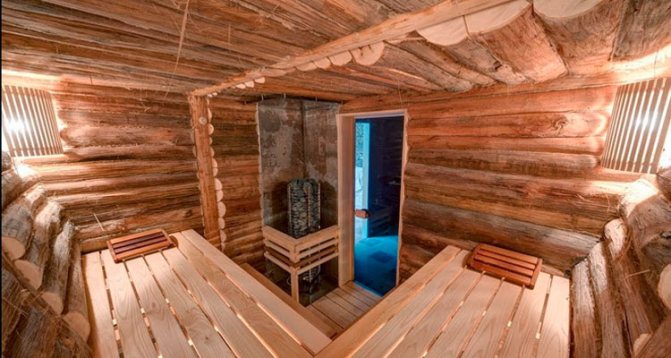
In order for all the advantages described above to be fully revealed to the owner, it is necessary to properly insulate the walls of the bathhouse. Construction work carried out in full compliance with all norms and standards is unable to retain heat, and therefore will negate the usefulness of bathing procedures, since the room will not be able to warm up to the required temperature. One possible solution to this problem is to reduce the time between adding fuel to the stove, but then the costs of maintaining the required temperature will increase.
Insulating your bathhouse will help you avoid unnecessary costs and experience all the benefits of a steam room. It is preferable to carry out such work at the stage of construction of the building, but if due to certain circumstances this could not be done, then it is possible to implement thermal insulation after construction. The main difference between work of this kind in a house and a bathhouse is that the latter requires a more thorough approach, since it is necessary to maintain an acceptable temperature for a long time. In this regard, it is necessary to take a thorough approach to carrying out thermal insulation work.
There are several main reasons:
- such a room heats up faster;
- comfortable temperature lasts much longer;
- reduction of fuel consumption required for heating;
- such a bath will last much longer.
How to choose
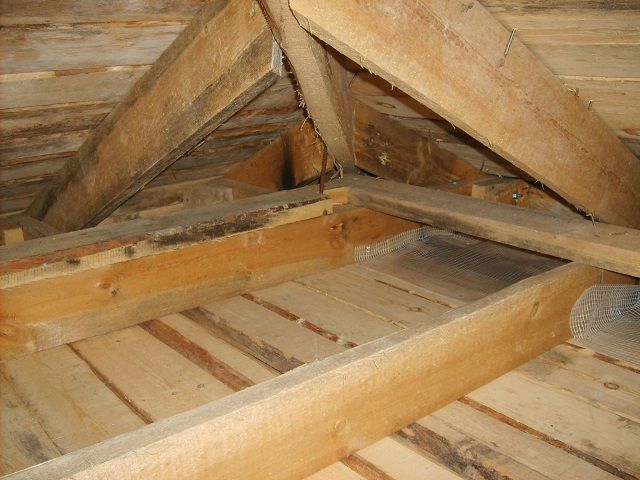
The insulation must meet a number of specific requirements, which are dictated by the environment of use. The material must withstand high humidity, withstand temperature fluctuations, not lose its properties when heated, and also act as an unfavorable environment for the development of mold and mildew. At the same time, it must retain its shape throughout its entire service life.
Among the main requirements:
- Environmental friendliness. One of the main requirements. There should not be any secretions harmful to the body. Heat insulators with a natural base are recognized as the safest.
- The thermal conductivity coefficient characterizes the effectiveness of the insulation used. The higher his performance, the better. Mineral wool is considered the warmest material. Its indicators are 0.045 W/(K*m).
- A good combination with building and finishing materials, which does not affect their specific properties.
- A traditional bathhouse is impossible without an open fire, which is why fire-resistant heat insulators are used when finishing the stove;
- The humidity level in the steam room is 40 - 60%. Taking these factors into account, you need to choose hygroscopic insulation with high vapor and waterproofing properties.
- The material must prevent the formation and accumulation of condensation.
- Frequent temperature changes should not have a detrimental effect on the performance characteristics of the thermal insulation material.
- The insulator should not react with other finishing materials.
- The material should not be afraid of rodents that love warm and humid climates.
- High level of tightness with a minimum number of joints.
- Ease of installation. It is more convenient to use insulation materials combined with frame sheathing. This makes finishing the room easier.
Comparative advantages of frame and timber baths
Each of these materials has its own positive characteristics, cost, service life, and distinctive qualities. The choice of building material for building a bathhouse takes into account not only the personal wishes of the customer, but also the characteristics of the soil, climate, and landscape. When comparing the main characteristics, frame baths have much more advantages than timber ones:
- The cost of materials and the entire project as a whole is almost 30% lower.
- Frame construction does not shrink, which allows you to quickly begin sheathing, finishing, and further operation. And in structures made of profiled timber, shrinkage of the building material lasts about a year.
- Resistant to fungal and bacterial influences, there is no need for antiseptic treatment, unlike a timber bath.
- The use of non-combustible materials increases fire safety, although it is worth noting that the use of modern anti-peering compounds significantly reduces the likelihood of fire in wooden buildings.
- Smooth frame structures simplify finishing. On the other hand, in a log house you can do without interior wall decoration at all.
- They can be erected on a site with any landscape.
- A bathhouse built using frame technology is not subject to destruction from natural phenomena or insects, and retains its original appearance for many years.
The most inexpensive insulation for baths and saunas
Interventional insulation
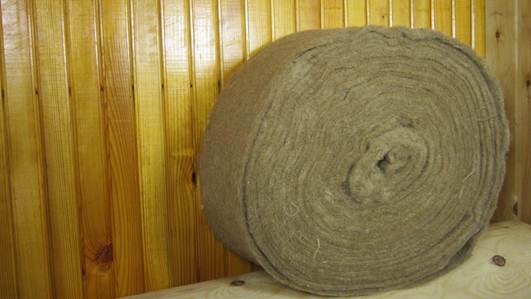
Many people associate a bathhouse, in the classical sense, with a wooden log building. Walls, as a rule, are insulated at the time of their construction, but if it was missed, then work can be carried out after construction.
This group includes insulation materials aimed at inter-crown joints in log walls. As a rule, they are made of flax, jute or moss, but there are also combined options containing impregnation, which birds do not like.
The main advantage of this material is its dense, homogeneous structure. Basically, it is produced in the form of tapes with a thickness of 4 - 15 mm. The insulation closes the pores and prevents cold air and moisture from penetrating into the room. Its installation will not cause any difficulties: just place it on the surface of a beam or log, and then secure it with staples using a construction stapler.
There are several groups of such materials:
- Jute. The most popular variety, which is sold in rolls. Its thickness ranges from 4 to 6 mm, and its width is 10 - 20 cm. It is a dense and homogeneous material with high hygroscopicity. Such high heat-protective properties were achieved due to the fact that the composition contains lignin. It is a substance with properties similar to the resin of coniferous trees. This insulation is inferior to flax in terms of residual elasticity. It cakes over time and under pressure the layers acquire a density comparable to natural wood.
- Linen. It is made from fibers of the same material using needle-punched technology. This insulation is also called flax wool. It has high environmental friendliness, retains heat, has an attractive appearance and an affordable price. Among the disadvantages, it is worth highlighting that it acts as a favorable environment for the development of mold and mildew, and also attracts the attention of birds.
- Moss (cuckoo flax, red moss, sphagnum). This is a classic solution that can be purchased for almost pennies or made independently. Has bactericidal properties. One of the weak points is that it dries out and then falls out. The material is a tasty prey for insects and birds.
Interventional insulation
Advantages:
- environmentally friendly material;
- affordable price;
- high levels of vapor permeability;
- installation will not cause problems even for a beginner;
- homogeneous structure.
Flaws:
- not suitable for use in stone buildings;
- burns well;
- acts as a favorable environment for the development of mold, mildew and some insects (with the exception of jute);
- jute heat insulator requires extreme care, since broken fibers will negate all its positive qualities.
Expanded clay
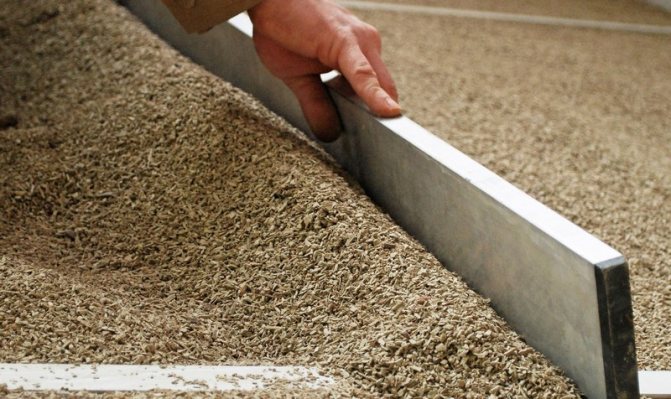
This bulk product has won many positive reviews. Outwardly, it resembles gravel or crushed stone. To obtain it, clay or clay slate is fired at a temperature of 1000 to 1300 C, and after half an hour a lightweight, oval-shaped porous material is obtained. Its main area of use is the installation of floors and attics. This material is resistant to the negative effects of moisture, insects and rodents do not grow in it. In addition, this is an unfavorable environment for the development of microorganisms. When installing floors, this insulation is added to the concrete screed. Under the roof it is scattered between the beams, thereby forming a continuous layer.
The material is divided into:
- Gravel. A distinctive feature is large granules (5 - 40 mm). They are used in almost all areas, including bath insulation.
- Crushed stone. Obtained by crushing the material described above. It acts as a filler for lightweight concrete.
- Sand of the smallest variety. It is used to reduce the weight of concrete structures. This is the best option for a bath.
insulation Expanded clay
Advantages:
- budget cost;
- moisture resistant;
- operation for a long time;
- does not harm health.
Flaws:
- limited scope;
- problems may arise during transportation;
- requires caution, as damage to the granules reduces properties;
- complex installation.
Styrofoam
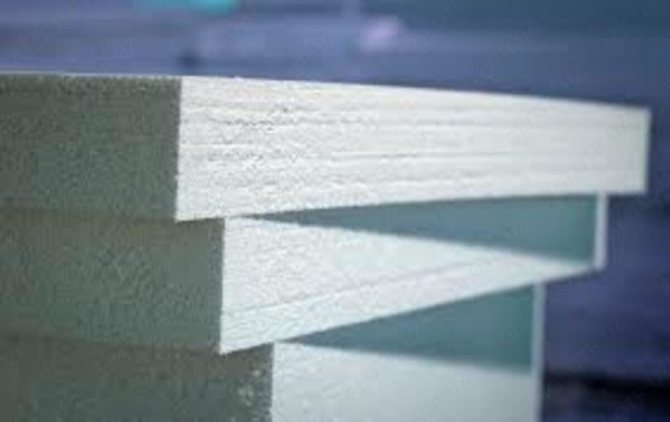
This is one of the most popular thermal insulation materials. This budget solution is suitable for almost any type of building. The material has high heat and sound insulation properties. Polystyrene foam is absolutely not suitable for use indoors at high temperatures. This is due to the fact that under such conditions it releases phenol-containing compounds that negatively affect human health. In addition, it is highly flammable. Considering all this, it can only be used for exterior decoration and in dressing rooms, where the temperature is much lower.
It is made from foamed polymer materials (polyvinyl chloride, polystyrene, polyurethane). Its composition contains 2% polymers and 98% air, which affects the light weight of the material.
insulation Foam plastic
Advantages:
- lightness;
- ease of installation;
- lowest thermal conductivity;
- versatility;
- operation for 30 years;
- budget price.
Flaws:
- burns and melts;
- when heated, it releases substances hazardous to the body;
- hygroscopic;
- attracts the attention of rodents, so it is recommended to treat it with special compounds before installation.
Which bathhouse is better made of timber or frame?
Advantages and disadvantages of timber and frame baths
Timber is a processed solid tree.
Baths are built from profiled, glued and, in rare cases, unedged timber. A definite plus of bathhouses made of profiled and glued timber is that their walls do not require laying a layer of insulation, they do not have to be covered with finishing material either outside or inside, and operation can begin literally immediately after the completion of laying the walls and roof. However, making walls from solid wood can cause problems - if the wood deteriorates, cracks, or becomes deformed, then the bathhouse building immediately becomes cold. Solid timber, in general, retains heat well, but only if the joints are perfectly made and the wall is sufficiently thick. A feature that can be considered a minus for timber baths is that structures made of solid wood are quite heavy, and a deep foundation (usually strip) has to be built under them. As for frame baths, they began to gain popularity in the last couple of decades (in Russia) - and not everyone is yet aware of the advantages of these buildings. Firstly, frame baths are lightweight: and thanks to this, they do not need a deep foundation - you can get by with a columnar, pile-screw or shallow strip version. Secondly, if the construction was carried out in compliance with technology and the use of high-quality modern materials, then such a bathhouse retains heat definitely better than a timber bathhouse (even in the cold season). Of course, a frame bathhouse requires the installation of insulation, waterproofing, vapor barrier and windproofing materials - but if frame-panel technology is used, all these materials are already assembled at the factory into a single sandwich panel, which is both quick and easy to install. Even if we are not talking about sandwich panels, the construction of a frame bath cannot be called long - it is quite comparable in time to laying timber. An important point is that a frame bath is usually cheaper, which attracts many people to frame technology.
And yet, which bathhouse is better - made of timber or frame?
Strictly speaking, both types of baths can perform their functions equally well. Both frame and timber buildings are durable, tolerate changes in temperature and humidity well (of course, with proper wood processing), and retain heat well. However, there are a number of parameters in which bathhouses with more modern frame construction technology take the lead.
This includes the price (after all, many customers make their choice based on the budget at their disposal), and the possibility of various options for external and internal finishing, and the environmental friendliness of the building materials used...
However, in order to take full advantage of the benefits that frame construction technology provides, it is worth ordering a frame bathhouse from professionals - a construction company with a good reputation.
You can also look at other interesting articles on the site here and here.
The best insulation for baths and saunas in the mid-price segment
Glass wool
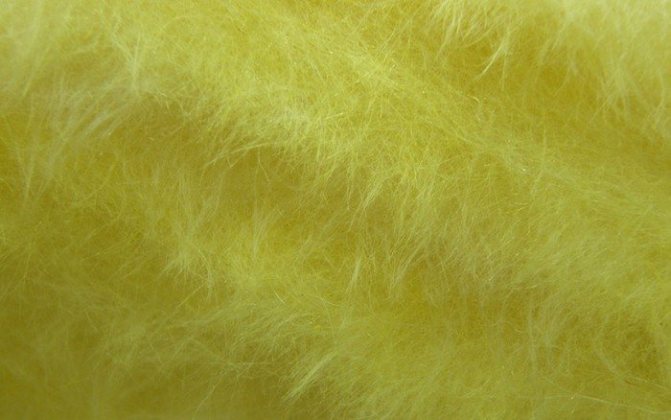
It is a yellow insulation material made from sand, soda, dolomite, limestone, borax and broken glass. All these components are placed in a special container, where they are heated to 1400 C. As soon as the mass is melted, it is passed through filters in a centrifuge, where it is blown to obtain the finest glass threads.
The material is treated with a polymer binder, and the result of this process is subjected to molding and blowing at a temperature of 250 C. The latter is necessary for drying and the formation of polymer bonds. The finished product takes on an amber-yellow color.
glass wool insulation
Advantages:
- lightness;
- high thermal conductivity;
- resistant to chemicals;
- does not burn or smolder;
- does not shrink even after many years;
- vibrations do not destroy fibers.
Flaws:
- brittle fibers;
- it is necessary to work with it exclusively in special clothing and a respirator, otherwise it can cause harm to the respiratory and visual organs;
- low moisture resistance.
Basalt insulation
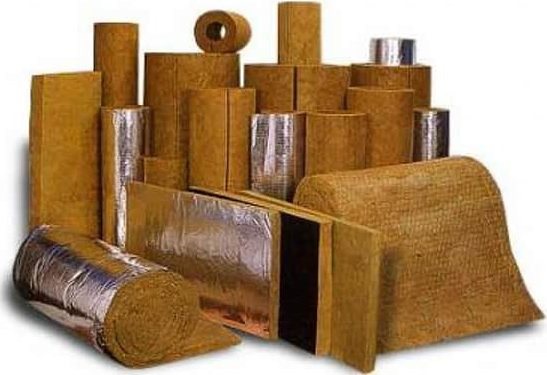
It is made from the rock of the same name. To do this, it is melted to a viscous state and, using a powerful stream of air, the fibers are blown out. Then they are intertwined and fastened together with arbide-urea resins. They are completely harmless. Their number does not exceed 5% of the total mass. Then the resulting mass is sent for pressing.
The production of basalt insulation can be compared to the production of cotton candy. This is the leader among thermal insulation materials on the market. This was facilitated by the environmental friendliness of the material, which is distributed in rolls, plates and cylinders.
Basalt insulation
Advantages:
- does not emit compounds harmful to the body;
- almost 95% of the composition is volcanic rock, which makes this insulation as natural as possible;
- minimum number of connecting elements;
- vapor permeability reduces the risk of condensation and the formation of microorganisms harmful to the body;
- operation for 30 years;
- does not burn;
- does not attract the attention of rodents;
- retains its shape even under the influence of aggressive environments;
- high sound insulation performance.
Flaws:
- heavy weight;
- quality depends on the production technology of a particular manufacturer.
Foil insulation
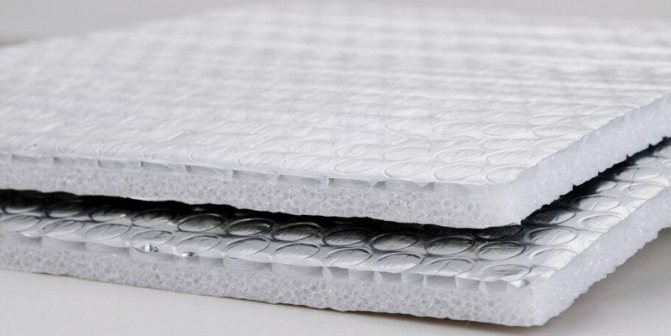
This is a two-layer material in which the outer layer is made of polished foil or metallized polypropylene film. This solution increases efficiency by 97%.
IR radiation hitting a reflecting surface is reflected, but part of the heat is transferred by convection through the air. Due to this, the foil heats up and transfers heat. The aluminum film passes it through itself onto the heat insulator. The thermal insulation qualities depend on the material placed under the film. Aluminum film is only needed to reflect IR rays. To do this, use a layer of air measuring 20 mm.
As a rule, foil heat insulators are used in steam rooms, since there is strong IR radiation from the stones. Aluminum retains moisture and steam. Only aluminum foil is used as insulation.
Foil insulation
Advantages:
- the metallized layer provides resistance to moisture and corrosion;
- absorbs noise well;
- reduces fuel costs;
- maintains an acceptable temperature for a long time;
- flexible;
- light weight;
- contains no toxic substances;
- Even a beginner can handle the installation work.
Flaws:
- insulation cannot be mixed with building mixtures;
- low anti-corrosion resistance.
The best insulation for premium baths and saunas
Penoizol
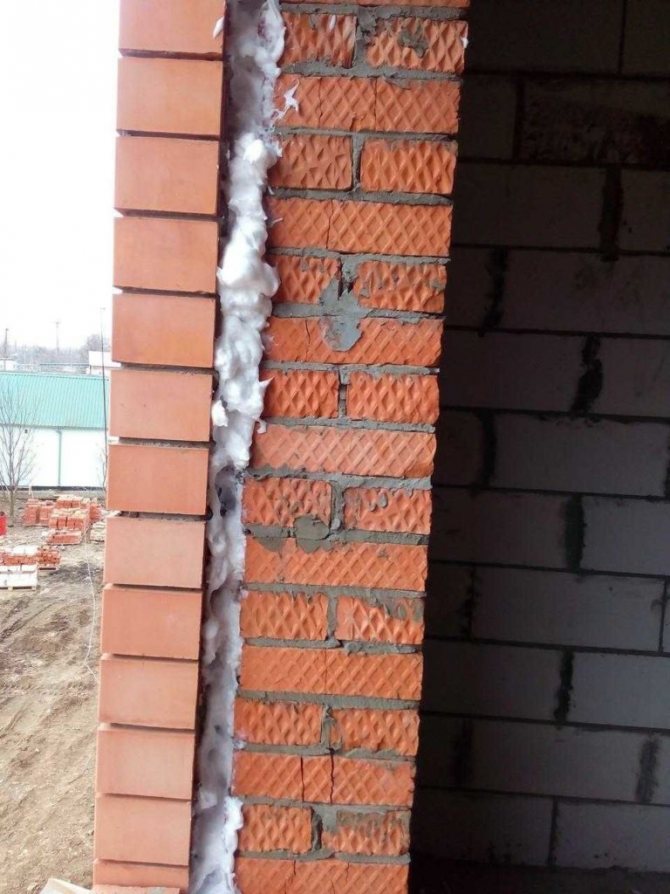
This material has a wide range of applications. Outwardly, it looks like polyurethane foam. In terms of properties, it has much in common with expanded polystyrene with minor differences: it does not burn and has an acceptable density.
Installation work is carried out using frame technology. In other words, it is first necessary to equip the boards with a special structure, and then the cavity is filled with insulation.
insulation Penoizol
Advantages:
- ease of processing;
- monolithic material without seams or voids;
- does not burn;
- high level of sound insulation;
- not of interest to rodents;
- cavities can be filled through small holes;
- eco-friendly.
Flaws:
- high price;
- installation work requires the involvement of specialists with special equipment.
Foam glass
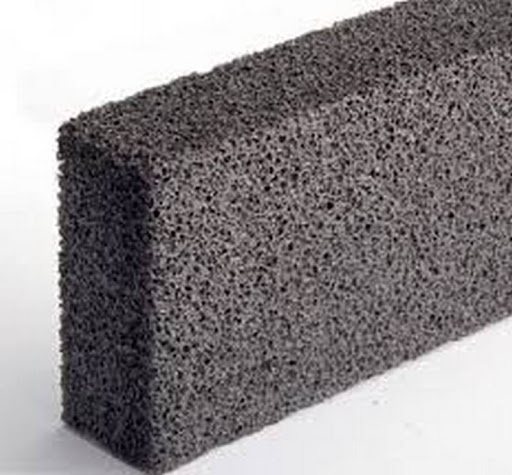
This is a newcomer to the building materials market, which is rapidly occupying a leading position and attracting more and more attention every day. According to its characteristics, it is head and shoulders above its competitors. The only factor that did not allow it to gain widespread recognition was the high price.
Silicates and gas-forming agents are used in the production of foam glass. The substance is heated to a temperature of 1000 C and foams. When cooled, it acquires unique properties and hardens. It is supplied to markets as sheets, slabs, blocks and granules.
insulation Foam glass
Advantages:
- service life is 100 years;
- environmentally friendly material;
- does not ignite and does not emit substances harmful to the body;
- high strength;
- unfavorable environment for the development of microorganisms;
- does not attract the attention of rodents.
Flaws:
- too expensive;
- low shock resistance;
- heavy weight creates additional stress on the structure.
Advantages of a frame bath
Frame technology is a fairly new method for constructing low-rise buildings in our country. Using this technology, a bathhouse can be installed year-round and on a lightweight foundation, since the weight of the building will be small. As the main building material, choose well-seasoned wood, preferably deciduous trees. This technology involves installing a wooden frame, assembling walls, insulation and cladding. The bathhouse will have to be insulated along the entire perimeter of the walls, using mineral wool or fiberglass. The frame itself is erected as quickly as possible, but the building will require external as well as internal finishing.
The frame bathhouse does not shrink, so you can start covering it almost immediately after installing the walls and roof. At this stage, you can use any name of vapor barrier, waterproofing and thermal insulation material. Pay special attention to vapor barriers, condensation is a terrible enemy and the weak point of a frame bath. Operation of the bathhouse can begin immediately after completion of all construction work.
You should know! The room warms up quickly, but the heat is not retained for as long as in a timber bathhouse.
Frame construction technology is considered to be one of the most budget-friendly; by choosing it, you will also significantly save precious time.
